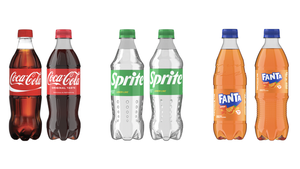February 1, 2004
When it comes to swapping one resin for another, who should pay? OEMs and material suppliers are called upon to do better by molders.
A survey conducted at NPE 2003 by Plante & Moran PLLC (Southfield, MI) revealed that the usual issues—margins and foreign competition—were the top two greatest challenges molders face today. And the third? Nearly a quarter of the survey takers indicated that material substitution was their greatest challenge.
Some molders laugh at the idea that, in light of eroding margins and work going to China, material substitution is even on the radar screen of concerns. “Gimme a break,” declared one molder who asked not to be identified. “This is just part of being a custom molder. It’s not a big deal.”
But it’s a management issue that, while minor for some molders, for others is a costly, time-consuming, and ongoing problem that affects productivity and profitability.
The Burden of Cost
Jeff Mengel of Plante & Moran says several scenarios could be at issue in the context of this survey response. “For instance, material producers discontinue certain materials from time to time for one reason or another, and it’s up to the molder to find an alternative,” says Mengel.
Jack Thompson, president of custom molder Fiesta Plastics (Tempe, AZ), says his biggest problem with resin suppliers is that these issues are ongoing, forcing him to constantly sample and re-evaluate the various products he molds.
“They come to us and say they’re going to obsolete a material and have to replace it with something else, when in fact it’s not a case of obsolescence but that their source for that specific material just discontinued it or the producer ran out,” says Thompson. In one case, he had to requalify material for a product twice in two months.
Thompson, whose company molds a variety of products from consumer to building and construction parts, says this causes prices to fluctuate. “When the supply source dries up, usually the price goes up,” says Thompson, who tries to make certain he can get long-term availability before locking into a specific material. “This happens more with distributors than with the resin producers.”
Usually the OEM won’t pay for the testing and sampling that ensures the new material performs in the same or a similar way as the original material. Jude Sheets, quality manager for Triad Plastic Technologies (Reno, NV), says he deals with material substitution issues almost daily. “Should the costs of finding a replacement material for a job that’s running really be on our nickel?” he asks. “The customer usually calls out a specific material and if it’s no longer available or gets too expensive, it should be on the customer’s nickel to make the switch. But, most of us [molders] don’t charge the customer. We just absorb those costs.”
In some rare instances the customer will pay for the costs of requalifying a different material, particularly if the substitution is requested by the customer to address a critical concern, such as with medical devices.“We’ve gone through several changes recently, but some are customer-requested,” says Arle Rawlings, president and CEO of Mastercraft Cos. (Phoenix, AZ), of his medical clients. “One resin producer no longer makes a certain material, so it made a new suggestion. Then we had to go through the rigors of sampling and DOE to prove out the material, which is costly. Usually, the customer is supposed to pay for this, and some will. But other customers want us to absorb it. We’re doing material requalifications on five molds right now and it’s not cheap.”
But what if the current material pricing increases to the point that the molder begins losing money on the production of certain parts and the customer doesn’t want to accept a price increase? Most molders interviewed say they’d definitely try to find an alternative material priced similarly to quoted production pricing. And, in that case, the onus should be on the molder to perform the sampling and provide the qualifications and evaluations.
Micromanaging Material
Additional troubles can develop for the molder if the OEM holds too tight a rein over resin specification. “The problem is that the OEM chooses the material, or one that meets its spec, so my hands are tied when it comes to price, even through I can find something 20% cheaper,” says Russ Carlson, purchasing manager for Erwin Quarder, a moldmaker and molder primarily for the automotive market in Kentwood, MI. “I then have to qualify the material and that costs more as well.”
This restrictive policy also hampers good business sense when molders recommend a specific type or brand of material, and then get locked into it by the customer. Processors want the latitude to find alternative materials when pricing or availability changes, especially if running 300 resin types at once.“A lot of the resin suppliers work with the OEMs to get a specific resin spec’d,” says Carlson. “I would like for the customer to tell me the general material, like 30% GF nylon, and then let me look for the specific brand, rather than just using automotive specs. That ties my hands.”
Triad’s Sheets agrees. “If they call out a generic type of material, then let us find the most cost-effective brand that will meet their needs,” he says. “Often we can do better on pricing and availability.”At least one molder had an easy switch with polypropylene. Cal-Mold Inc. (Mira Loma, CA) processes about 65% commodity resins and 35% engineering resins. Erik Fleming, president, says the problem of material substitution primarily affects engineering thermoplastics. “We use 6 million to 7 million lb of polystyrene annually, both high-impact and GP. As for the polypropylene we use, the resin suppliers just discontinued one type of PP, but offered us a replacement that works fine.”
Contact information |
You May Also Like


